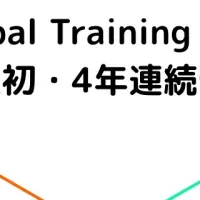
Global AI Integration Progress Revealed by TE Connectivity's Industrial Technology Index
extensive" adoption of AI within their firms.
Among the key insights, the survey shows notable disparity in AI adoption by region. For instance, companies in China appear to lead in this transformation, with 28% of respondents stating their organization employs AI extensively and 60% noting that AI has been in use for at least three years. In stark contrast, only 15% of American respondents report extensive AI utilization, with a mere 9% having employed the technology for three years. Other countries displayed varied results as well, with 51% of respondents from Japan, 38% from Germany, and 29% from India reporting long-term use of AI. This data underlines that while AI's potential is recognized globally, the path to integration is uneven and heavily influenced by regional industry priorities.
According to TE Connectivity's CEO, Terrence Curtin, the report underscores both the opportunities and challenges faced by businesses as they navigate the integration of disruptive technologies like AI. The surveyed executives express a strong belief in the benefits of AI, particularly its ability to optimize processes and enhance energy efficiency. However, a concerning trend was observed where only 36% of executives identified sustainability as a primary goal for their AI strategies, often placing financial considerations above environmental objectives. This could hinder the potential of AI in driving sustainability initiatives; a critical consideration in today's global economic landscape.
Another notable aspect of the report was the correlation between AI integration and employment desirability. A striking 80% of surveyed engineers expressed a strong preference for working in companies committed to advancing AI technologies. This statistic not only highlights the importance of AI in shaping future workplaces but also emphasizes the pressing need for businesses to invest in employee training and development to attract talent.
TE Connectivity's 2025 Industrial Technology Index paints a complex landscape of AI integration across multiple industries and countries. With a significant segment of the workforce eager to engage with AI, companies must prioritize training and development initiatives. As barriers to AI adoption persist, business leaders should foster an environment that encourages innovation, investment in training, and a balanced emphasis on financial and sustainability goals. For more in-depth insights from the survey, please visit te.com/techindex.
For future reference, organizations aiming to thrive in this dynamic environment should consider a strategic approach to AI adoption that not only focuses on technology integration but also on cultivating the necessary skills among their workforce, thereby unlocking the full potential of artificial intelligence in driving productivity and sustainability.
Among the key insights, the survey shows notable disparity in AI adoption by region. For instance, companies in China appear to lead in this transformation, with 28% of respondents stating their organization employs AI extensively and 60% noting that AI has been in use for at least three years. In stark contrast, only 15% of American respondents report extensive AI utilization, with a mere 9% having employed the technology for three years. Other countries displayed varied results as well, with 51% of respondents from Japan, 38% from Germany, and 29% from India reporting long-term use of AI. This data underlines that while AI's potential is recognized globally, the path to integration is uneven and heavily influenced by regional industry priorities.
Opportunities and Challenges
According to TE Connectivity's CEO, Terrence Curtin, the report underscores both the opportunities and challenges faced by businesses as they navigate the integration of disruptive technologies like AI. The surveyed executives express a strong belief in the benefits of AI, particularly its ability to optimize processes and enhance energy efficiency. However, a concerning trend was observed where only 36% of executives identified sustainability as a primary goal for their AI strategies, often placing financial considerations above environmental objectives. This could hinder the potential of AI in driving sustainability initiatives; a critical consideration in today's global economic landscape.
The Future of AI Training and Employment
Another notable aspect of the report was the correlation between AI integration and employment desirability. A striking 80% of surveyed engineers expressed a strong preference for working in companies committed to advancing AI technologies. This statistic not only highlights the importance of AI in shaping future workplaces but also emphasizes the pressing need for businesses to invest in employee training and development to attract talent.
Conclusion
TE Connectivity's 2025 Industrial Technology Index paints a complex landscape of AI integration across multiple industries and countries. With a significant segment of the workforce eager to engage with AI, companies must prioritize training and development initiatives. As barriers to AI adoption persist, business leaders should foster an environment that encourages innovation, investment in training, and a balanced emphasis on financial and sustainability goals. For more in-depth insights from the survey, please visit te.com/techindex.
For future reference, organizations aiming to thrive in this dynamic environment should consider a strategic approach to AI adoption that not only focuses on technology integration but also on cultivating the necessary skills among their workforce, thereby unlocking the full potential of artificial intelligence in driving productivity and sustainability.
Topics Consumer Technology)










【About Using Articles】
You can freely use the title and article content by linking to the page where the article is posted.
※ Images cannot be used.
【About Links】
Links are free to use.